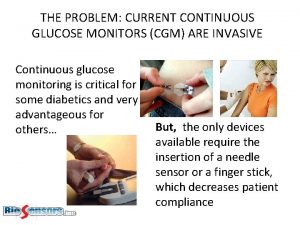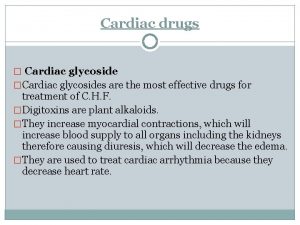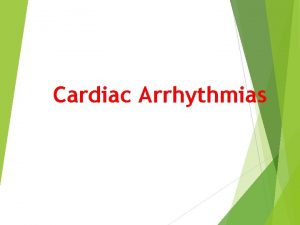Cardiac monitoring Definition of cardiac monitoring A noninvasive













- Slides: 13

Cardiac monitoring

Definition of cardiac monitoring: A non-invasive procedure that display the electrical activity of the heart; these electrical impulses are picked by the surface electrodes and are transported and then recorded in the ECG.


Purpose: To provide a continuous graphic picture of cardiac electrical activity to be used for diagnostic, documentation, and treatment purposes.

Indication: All patients in critical care units. Patients in selected acute care settings, post anesthesia areas, operating rooms & emergency department.

Display system Modern electronic technology continues to made sophisticated adventure in monitoring equipment, and current display systems incorporate features such as the following: Improved freeze/hold modes, which allow the ECG pattern to be hold for more detailed examination.

Alarm systems for a variety of parameter. Multi lead or 12 lead ECG display, which allow complex arrhythmia interpretation. Storage capability that permits retrieved of arrhythmias.

ST segment analysis for monitoring ischemic events. Multi parameter displays, which offer display of hemodynamic pressures, temperature, and respirations.




Special considerations: Make sure all electrical equipment and outlets are grounded to avoid electric shock and interference (artifacts). Also ensure that the patient is clean and dry to prevent electric shock. Avoid opening the electrodes packages until just before using to prevent the gel from drying out.

Avoid placing the electrodes on bony prominence, hairy locations, areas where defibrillator pads will be placed. If the patient’s skin is very oily, scaly, or diaphoretic, rub the electrodes site with a dry gauze pad before applying the electrode to help reduce interference in the tracing.
 Non invasive cgm
Non invasive cgm Vegetations in infective endocarditis
Vegetations in infective endocarditis Normal co/ci
Normal co/ci Cardiac vegetation definition
Cardiac vegetation definition Cardiac massage definition
Cardiac massage definition Positions in nursing patients
Positions in nursing patients Svr cardiac
Svr cardiac Homometric regulation of cardiac output
Homometric regulation of cardiac output Cardiac distension
Cardiac distension Ileocaecal junction
Ileocaecal junction Cardiac cycle steps
Cardiac cycle steps Mammillated areas of stomach
Mammillated areas of stomach Visceral peritoneum
Visceral peritoneum Cardiac of stomach
Cardiac of stomach

























